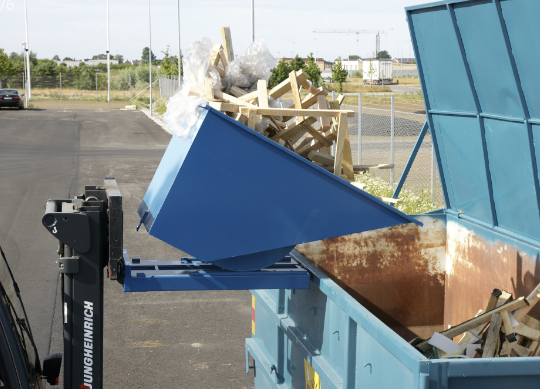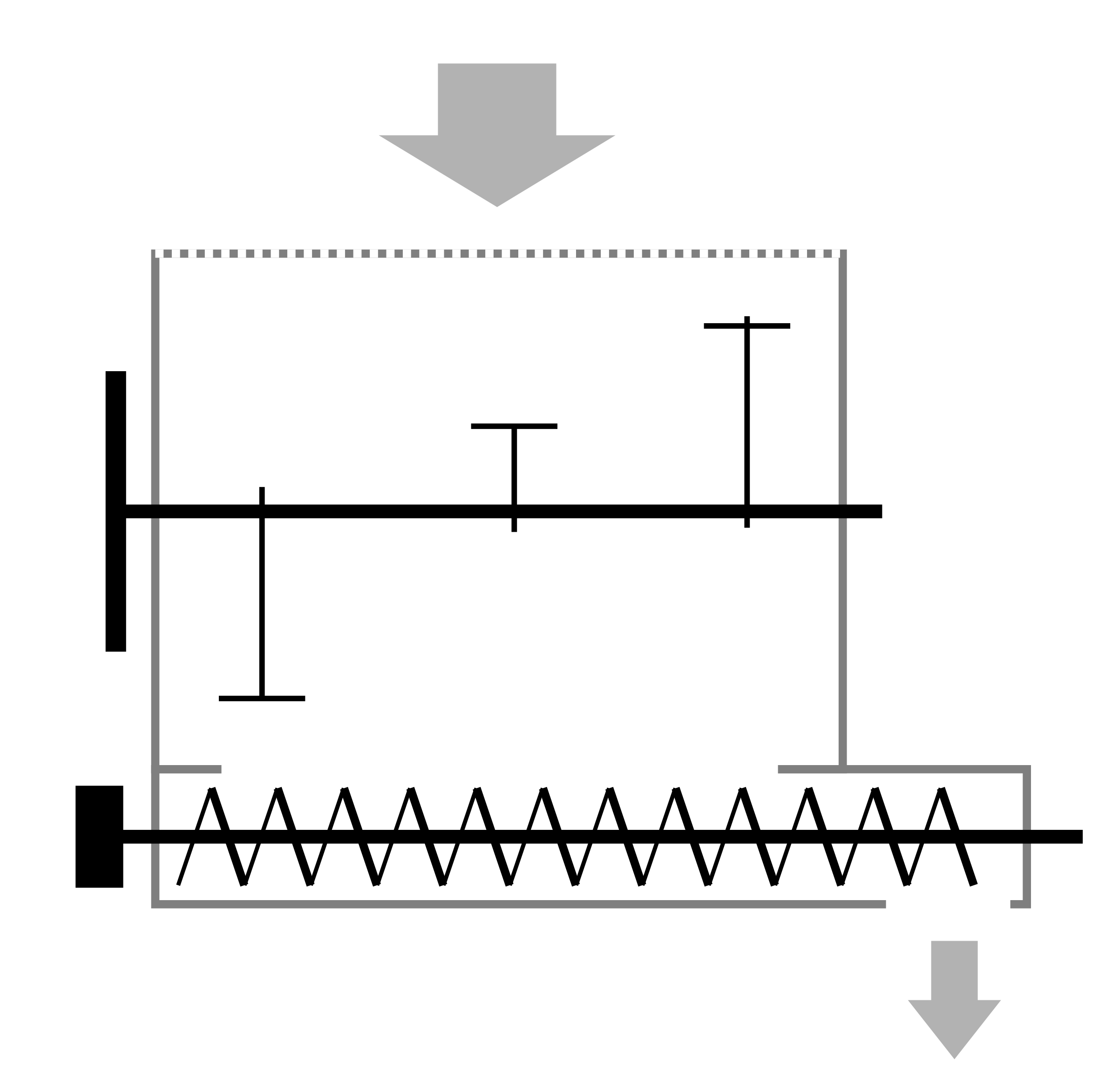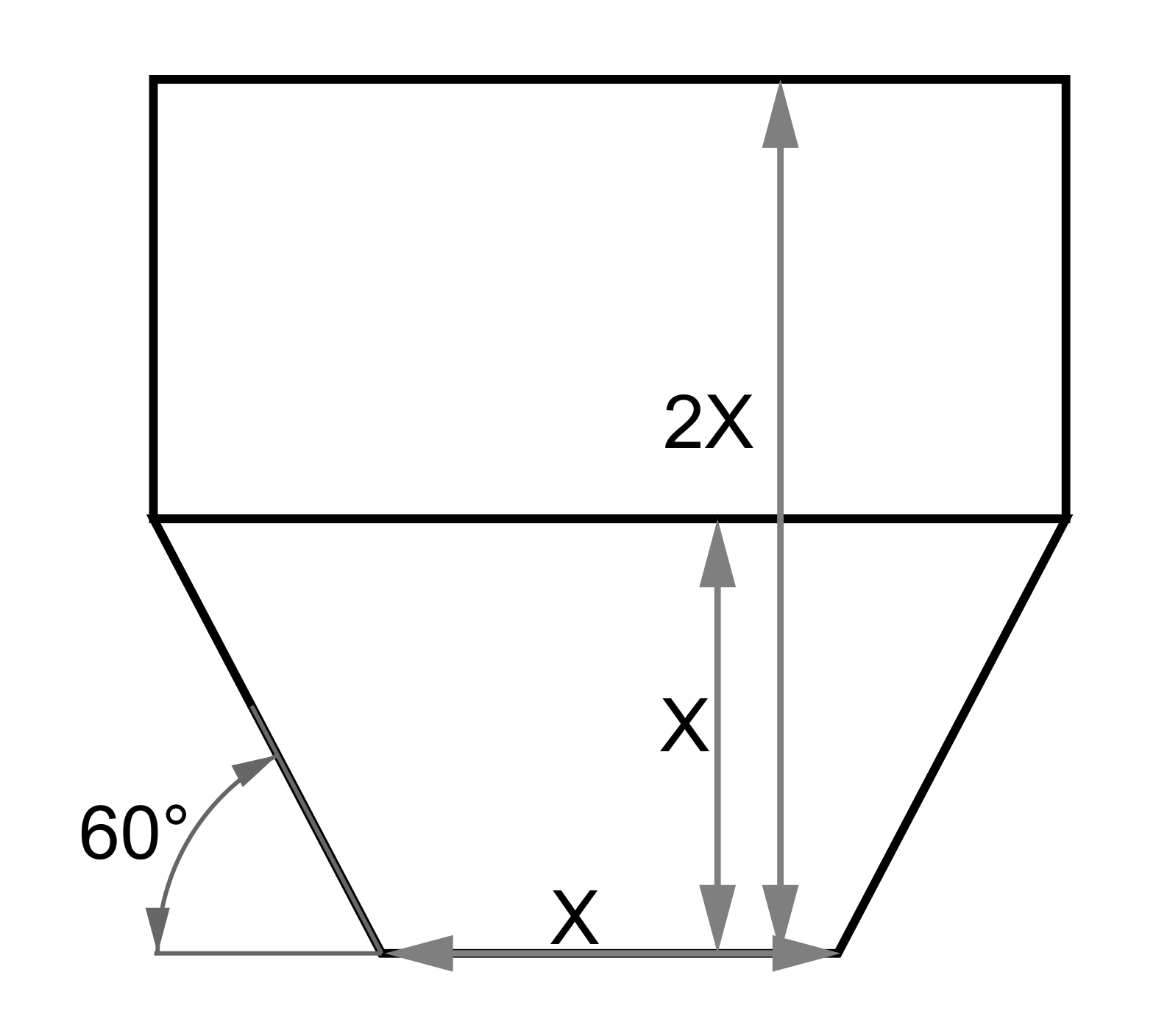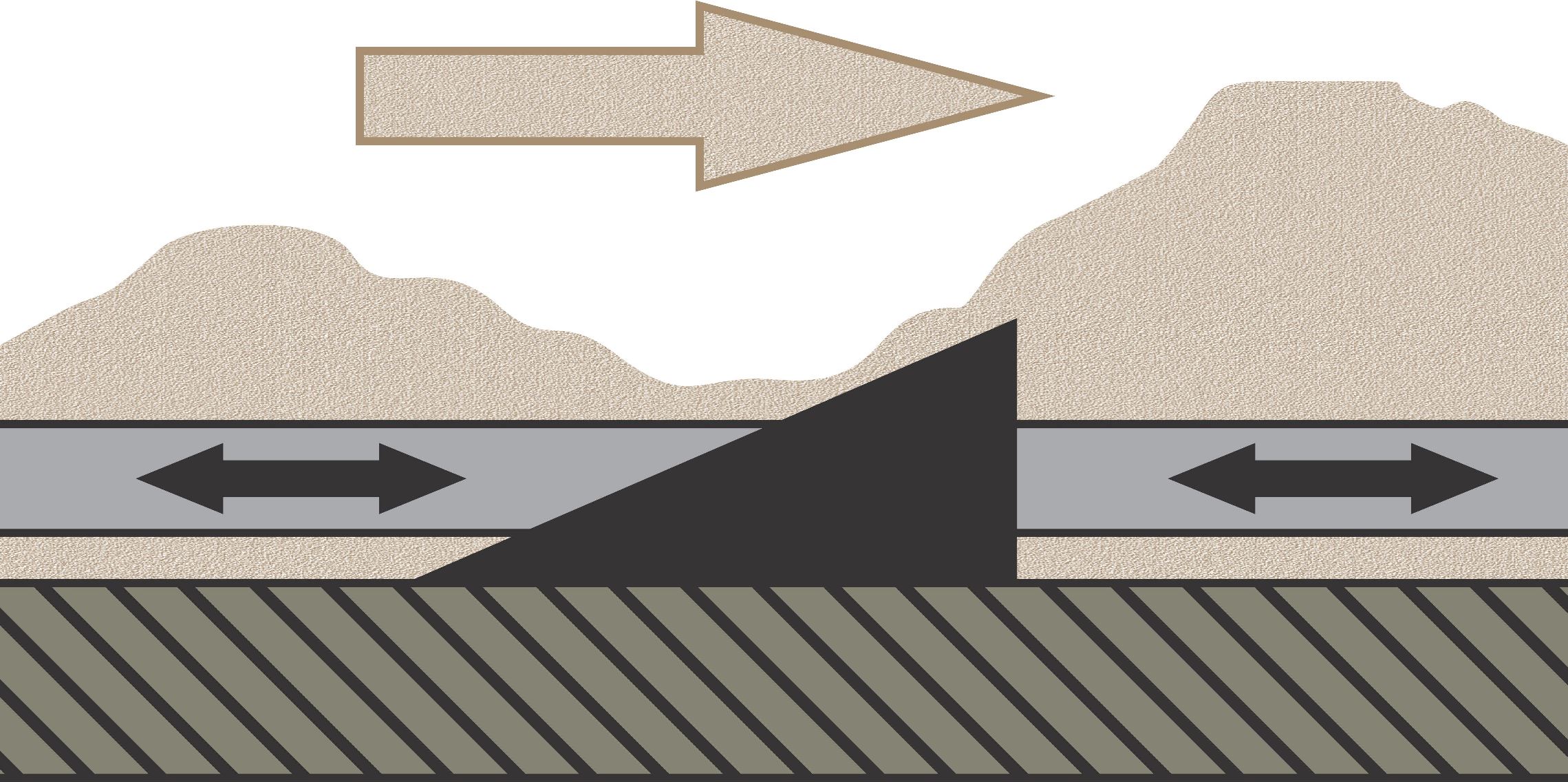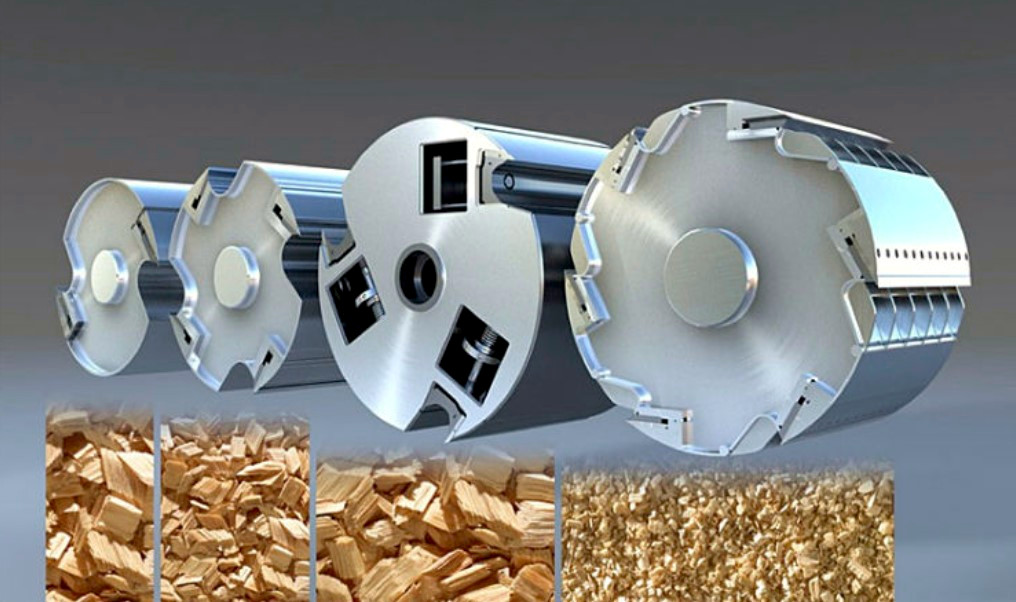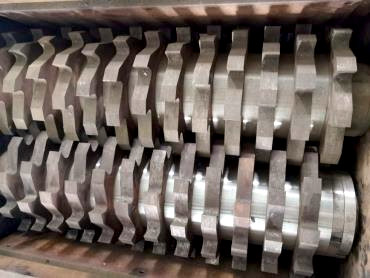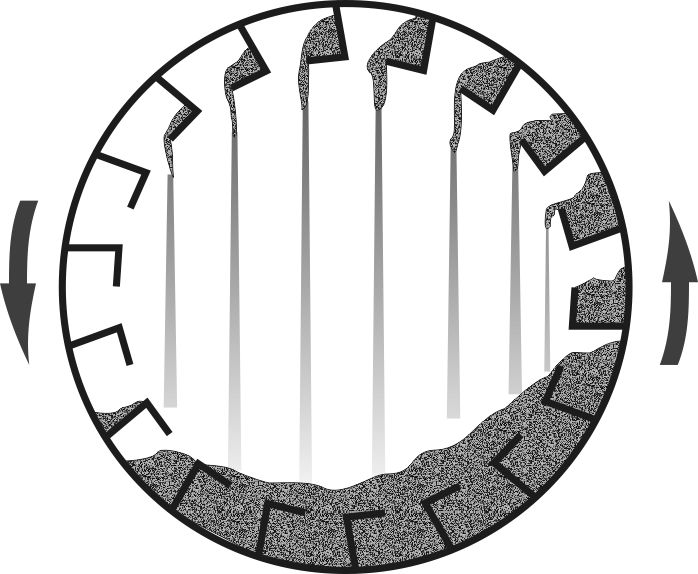The production rate that is closest to reality for one calendar month can be estimated considering that the equipment is loaded at 50-70% of its nominal capacity and runs continuously for about 600 hours. The remaining time is spent on preventive maintenance. This is an almost ideal setup that well-constructed and organized plants reach in 3-5 months after startup.
To reduce the possibility of error in calculations, it is preferable to immediately convert figures to measurements in tons or solid cubic meters. Bulk density is the most unpredictable indicator, and no tables or coefficients can reduce the error to 10%. The fluffiest raw materials are wood shavings 5-7 lb/ft3 (90-120 kg/cubic meter), sunflower hulls 6-8 lb/ft3 (100-130 kg/cubic meter), and RDF 5-8 lb/ft3 (90-130 kg/cubic meter), which easily compact during storage, can absorb moisture, and upon reaching maximum moisture levels, begin to decompose, losing technological properties. The bulk density of chips depends very much not only on moisture but also on the grinding equipment. The densest chips are cut on disc chippers at a fraction size up to 20mm. The most common shape and fraction are obtained on large drum chippers, and for coniferous raw materials, the bulk density at natural moisture content is about 380 kg/m3 with a fraction size of about 50mm. The lowest bulk density is found in chips produced by shredders, where the wood predominantly tears, creating partially split sticks.
The greatest raw material losses occur during drying and using part of the raw material as fuel. The table exemplifies the calculation for obtaining 1 ton of dry wood raw material at different initial moisture content. The heat required for drying includes the cost of melting frozen moisture in the raw material. The most probable natural moisture content of wood is 45 to 55%, and these values should be used for calculating the production line. Bark with frozen ice and chips from under the snow reach moisture content of 70-80%. The advisability of processing such raw materials becomes questionable since one ton of pellets will come from more than six tons of chips, and the drier's performance will drop by 2.5-3 times, resulting in a sharp increase in specific energy consumption and labor costs. Such a large raw material consumption is caused not only by a 2-3 fold increase in heat energy costs for drying but also by the same reduction in the calorific value of the fuel, which uses the same raw material.
| Initial Relative Humidity | Raw Material for 1 Ton of Pellets, t | Evaporated Water Amount, t | Heat Quantity for Drying, MJ | Fuel Calorific Value, MJ/t | Fuel Quantity, t | Raw Material + Fuel, tons | Fuel/Raw Material Total |
|---|---|---|---|---|---|---|---|
| 0.75 | 3.60 | 2.60 | 7020 | 2675 | 2.62 | 6.22 | 42% |
| 0.7 | 3.00 | 2.00 | 5400 | 3750 | 1.44 | 4.44 | 32% |
| 0.65 | 2.57 | 1.57 | 4243 | 4825 | 0.88 | 3.45 | 25% |
| 0.6 | 2.25 | 1.25 | 3375 | 5900 | 0.57 | 2.82 | 20% |
| 0,55 | 2,00 | 1,00 | 2700 | 6975 | 0,39 | 2,39 | 16% |
| 0,5 | 1,80 | 0,80 | 2160 | 8050 | 0,27 | 2,07 | 13% |
| 0,45 | 1,64 | 0,64 | 1718 | 9125 | 0,19 | 1,82 | 10% |
| 0.4 | 1.50 | 0.50 | 1350 | 10200 | 0.13 | 1.63 | 8% |
| 0.35 | 1.38 | 0.38 | 1038 | 11275 | 0.09 | 1.48 | 6% |
| 0.3 | 1.29 | 0.29 | 771 | 12350 | 0.06 | 1.35 | 5% |
| 0.25 | 1.20 | 0.20 | 540 | 13425 | 0.04 | 1.24 | 3% |
| 0.2 | 1.13 | 0.13 | 338 | 14500 | 0.02 | 1.15 | 2% |
| 0.15 | 1.06 | 0.06 | 159 | 15575 | 0.01 | 1.07 | 1% |
| 0.1 | 1.00 | 0.00 | 0 | 16650 | 0.00 | 1.00 | 0% |
When drying from 55% moisture content to 10%, the wood loses exactly half of its mass. Therefore, considering the burning costs, you need about 2.4 tons of wood for 1 ton of ready pellets. If the raw material contains only 5-10% solid substance, like manure in lagoons, intimidating figures of 200-300 tons per day of semi-liquid mass convert into 20 tons of finished pellets, for which a relatively small pelletizing workshop will suffice.
When calculating with wood to verify selection adequacy, it's better to go backwards. If the plant can consistently produce 1 ton per hour, a realistic monthly output is about 600 tons of pellets, requiring nearly 1500 tons of wood, or 2500 solid cubic meters if processing pine or similar dense species. Typically, about 50% of the logs entering the plant turn into waste. Consequently, for such a pelletizing line, the incoming raw material volume must be around 5000 solid cubic meters of fresh timber. In practical terms, this means that on average, 6-8 logging trucks should enter the plant daily. In centralized processing of wood residues in a specific area, this amount of freshly cut timber must be produced or delivered to the enterprises that are expected suppliers of chips and sawdust.
One risky approach is "sequential" investment in wood pellet production, where you purchase a line with minimal equipment for working only with raw sawdust and postpone buying chippers, uniform feed hoppers, and other peripherals for several months post-launch. The main idea here is to earn money on initial shipments and reinvest. From logs in solid cubic meters, you get roughly 50% board, 15% sawdust, and the remaining 35% is slab wood. In reality, due to sawdust shortages and unstable work over the course of about a year, not one month ends profitably; thereafter, the investor's cash reserves deplete, starting a bankruptcy process. Meanwhile, piles of slab wood with trimming accumulate around the plant, accompanied by fines from environmental and fire services.
When working with conditionally dry raw materials, the output product is approximately the same in mass as the incoming flow. Typically, a margin of error of 2-3% is not considered important, since excess moisture can be removed during pellet cooling, or it might be added before pelletizing. The expression "how many grams to hang" brings smiles at biofuel plants, but during feed pelletizing, it becomes a very serious question. For instance, the moisture content of the cake coming out of oil extraction is only 3-5%. To successfully pelletize it, about 7-10% water is added, and the pellets then have a moisture content of 10-12%. Thus, for every ton processed, you get an additional 50 kg of product just by adding water. Interestingly, the cake is sold in both raw and pelletized forms at the same price. Considering an average daily production rate of 100-120 tons on one pelletizer, this added value can make the equipment pay for itself in 2-3 months.
If the main goal is to quickly and safely recover the investment in the pellet project, production capacity should be calculated based on the minimum guaranteed volumes of raw materials to avoid downtime. This strategy is justified in most cases since waste can be stored at the raw material source for some time, thus smoothing out peak loads. However, if the main goal is to prevent waste accumulation, the production capacity of the plant is often calculated to determine the maximum technical capacity of the line, understanding that pellet production will inevitably not be fully loaded most of the time.
The initial calculation of the pelleting line's capacity is usually based on the parameters of the pellet mill, and peripheral equipment is selected based on these limits. Process optimization begins with proper feed and primary grinding, and even the initial shape and fraction of chips can change the plant's overall productivity by 1.5-2 times and critically affect the main properties of the product. For many units, both maximum and minimum production capacities are defined. Falling below the minimum capacity either dramatically increases energy costs or even leads to an emergency situation with equipment damage or fire. Therefore, when describing the features of each unit, the greatest attention is paid to these boundary values, which are not only empirically calculated but also verified in practice.
You Might Also Like
Important! All information on this website is for informational and recommendation purposes only! Before making changes to the settings and structure of the equipment, be sure to consult with the manufacturer, ensure the safety of your actions, and just in case, consider how to return everything to its original state.



